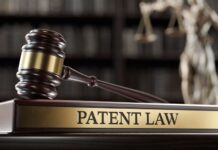
By Essenese Obhan
By Sneha Agarwal
By Anindita Goswami
Computers have come a long way from the days of being unattractive, room-consuming machines of a few years ago. Today, they are inextricably linked with our lives, and are constantly being reinvented in ways that cement their usefulness in modern society, accompanied by a host of inventions and patent applications. Over time, each jurisdiction has evolved its own set of parameters to evaluate Computer Implemented Inventions (CII), and it is likely that a CII patentable in one jurisdiction may not be patentable in another. India has had a long and extensive debate on the patentability of CIIs and as yet, awaits the emergence of a standard “test” to assess such inventions. Meanwhile, the Intellectual Property Office (IPO) continues to receive and process applications in the domain.
CII patenting trends
The IPO’s 2010 annual report gives a preliminary indication of where India stands on CIIs. According to this Report, over 34,000 patent applications were filed in the period April 2009 to March 2010. About a quarter of these applications (about 7600) related to computers and electronics; and nearly 1200 of these applications eventually converted into granted patents, constituting 19.3% of IPO grants, See figure 1.
FIGURE 1: COMPUTER/ELECTRONICS PATENT
APPLICATIONS FILED AND GRANTED FROM 2009 TO 2010

These numbers are certainly encouraging, but they include both computer implemented and electronics-related inventions. A more nuanced story emerges when looking at patents and applications dealing only with CII or software inventions and going beyond the data published in the Annual Reports to look at granted patents and applications that have been published.
FIGURE 2: KEYWORD BASED STUDY: COMPUTER, CPU, PROCESSOR UNIT, DATA CARRIER, DATA SRUCTURE, SOFTWARE, MICROPROCESSOR, INTERNET, EMAIL

Note: Above data is based on published patent applications and the keyword search was limited to title and abstracts.
FIGURE 3: SEARCH BASED ON IPC CLASS GO6F: ELECTRIC DIGITAL DATA PROCESSING

Note: Above data is based on published patent applications and the actual number of patent applications filed in a particular year may be higher.
IPC G06F covers a broader category of inventions, and in order to better determine the boundaries of software inventions in India, a further search was done in the IPC subgroup G06F 9/40 which focuses on “Arrangements for executing sub-programmes, i.e. combination of several instructions”. While it would be impossible to use reliably any group of classes to cover all pure software inventions, it is possible to extract some general trends using this sub-category (G06F 9/40), which relates mainly to software. Taken as a portion of the whole, hardly any applications or patents were revealed in this subcategory. However, the percentage of patents granted to applications filed in this subcategory has increased dramatically over the years, to 30 %, as illustrated in Figure 4. Evidently, and perhaps contrary to what some sections of the industry believe, these figures suggest that even pure software inventions may be patentable in India, if they meet certain environment. The next logical step appears to be to study what these requirements could be.
RECENT IPO DECISIONS ON CIIs
Section 3(k) of the Patents Act, 1970 (duly amended in 2005) as the key to understanding the requirements of patenting CIIs in India. Section 3(k) deems a mathematical or business method or a computer programme per se or algorithms as “not inventions” under the Patents Act. The legislative history of the inclusion of this subsection in its present version tells an interesting tale. The subsection was first incorporated by the Patents (Second Amendment) Bill, 1999 (“the bill”), without the phrase per se. The bill was subsequently referred to a Joint Committee by the Indian Parliament for their comments and suggestions. Upon the recommendations of the Committee, the phrase “per se” was introduced as a qualifier for computer programmes. The Joint Committee further clarified that the intention behind the revision was not to reject inventions outright merely because they were based on computer programmes. Indeed, the Committee appeared to have had every intention (and stated as much) to allow inventions which included certain other features ancillary to or developed on a computer program. Unfortunately, no guidance was offered as to the interpretation of these words. Of equal significance was the lack of clarity surrouding the term algorithm, which is statutorily excluded from patentability. As a result, and in patent office pratice, any method claim in a CII application is now rejected by the IPO as being an algorithm under Section 3(k). Such rejections may be questionable, particularly when considered in context of the legislative intent behind the drafting of the subsection.
The recently issued Manual of Patent Practice and Procedure of the IPO also fails to provide any meaningful explanation of what a “computer programme per se” would not include. With varied views extant on the interpretation of “computer program per se” and “algorithms”, what is actually patentable in the field still remains abstruse. In recent decisions, and somewhat unexpectedly, the IPO has also rejected the European “technical effect” test, holding that the implementation of such a test is unsupported by Indian Law (see, for example, decisions to refuse grant of patent for Indian patent application numbers 3624/DELNP/2005 and 1733/DELNP/2005).
In this context, it becomes critical to understand the approach of the Patent Office towards the patenting of CIIs. A study of some of the patents granted and applications rejected under IPC G06F 9/40 which focuses on software, may serve as a useful indicator. in particular, a detailed analysis of two decisions granting patents under IPC G06F 9/40, as well as a decision of the rejection of a patent application under the same category. These three case studies seek to illustrate the line demarcating patentability from non-patentability, and the grey areas in between.
Decision I: the Intel Patent
The applicant here was Intel (no 209399) and the invention was patentable. This patent teaches a method of resolving address space conflicts between a guest operating system (GOS) and a Virtual Machine Monitor (VMM). The invention resides in detecting an attempt by a GOS to access a region occupied by the VMM and relocating that part of the VMM to allow the GOS access and to prevent abnormal termination of operations performed either by the GOS or the VMM. The specification relies on algorithmic descriptions and representations, and in fact, categorically states that it may be performed on a general purpose computer. This grant indicates that it may not be necessary to have a software-hardware combination. It also suggests that not all method claims in CIIs are necessarily rejected as algorithms.
Decision II: Nice Systems
The applicant in this case was nice systems (no 121/DELNP/ 2004) and the invention was not patentable. This application relates to a method of analyzing customer interactions in a Customer Relationship Management (CRM) environment such as a call centre. The application includes both apparatus and method claims, and teaches a rule-based engine that analyzes two or more customer interactions to determine and highlight any behavioural patterns of concern. Although the application uses a functional description for the hardware elements, it effectively discloses a conventional network-based system. The IPO refused to grant a patent on this application under Section 3(k) as being “purely a computer implemented software invention”. The IPO did not appear to have applied any “test” or rule by which it arrived at this decision. Nevertheless, the decision, which is reasonably sound, is difficult to fault even if the oft-relied upon test of “technical effect” is applied.
Decision III: Unisys
The applicant here was Unisys (no 233330) and the invention was patentable. This patent actually teaches a state machine programming language that allows a programmer to directly program according to a state machine model. The invention resides in defining each state by actions and events, where the functions called by the actions are defined separately from the state definitions. Although the application as filed included method claims, the claims granted were directed towards a data processing system. This grant truly tests the boundaries of Section 3(k): although the invention resided in a “computer programme”, the IPO found that it was not a “computer programme” per se. However, instead of granting the method claims, the IPO chose to allow the system claims that were admittedly a conventional computer system.
CONCLUSION
The patents granted in IPC G06F and G06F 9/40 indicate that CIIs are patentable in India. Unlike other jurisdictions which are guided by standardised tests of patentability in the area, the IPO has been reluctant to adopt any such equivalent “test” in India. It prefers instead to take up issues in individual cases. Not surprisingly, such an approach leads to inconsistencies in decisions, which applicants could well do without. With the number of applications in the domain only set to grow, it is hoped that some clearer guidelines emerge from the IPO.
















